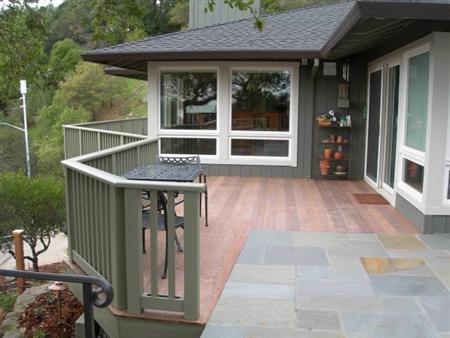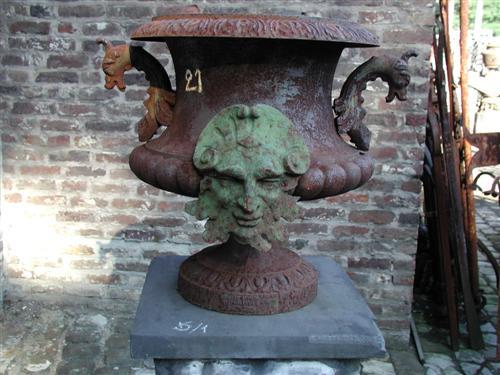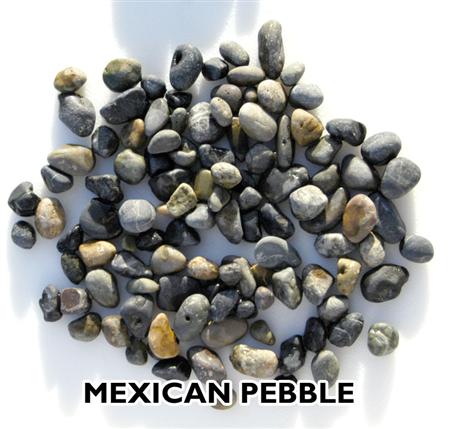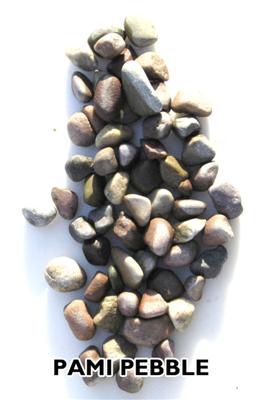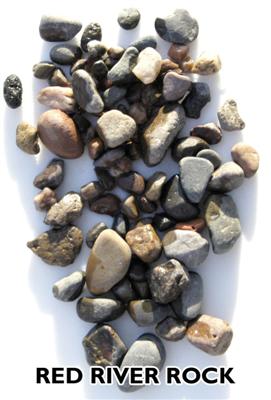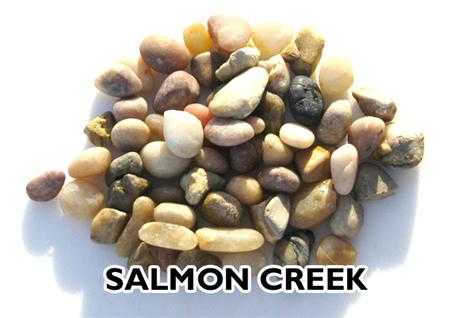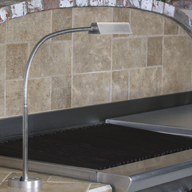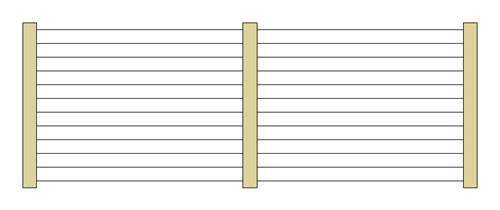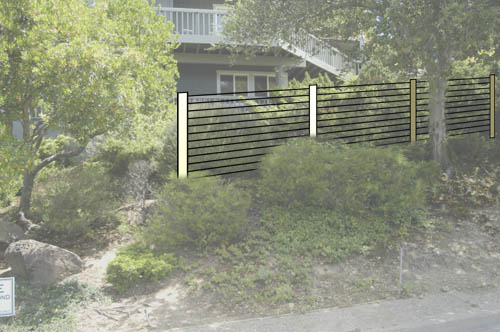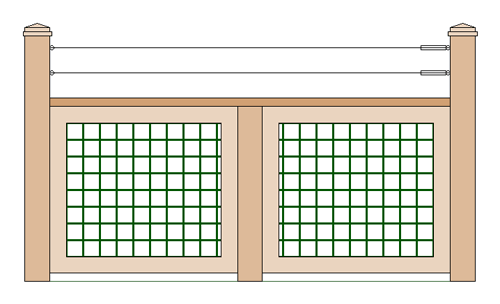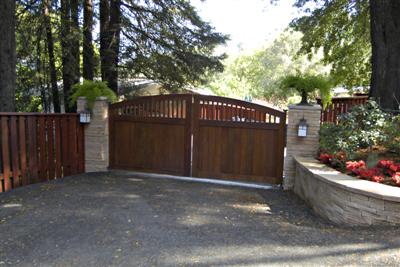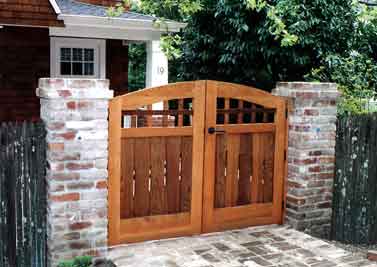July 12, 2005
Concrete is another material where I get frequent questions from clients asking about the range or choices for concrete finishes. The different types of concrete finishes come from different manipulations to the concrete surface and color. Here is a brief rundown of common finish types:
Exposed or Washed Concrete: The concrete (it can be colored or gray) is finished and typically treated with a surface agent. Once the concrete has had a sufficient chance to dry, the top layer of concrete is washed off to reveal the aggregate (sand & gravel). This finish is commonly used on city sidewalks, and makes for a high traction surface.
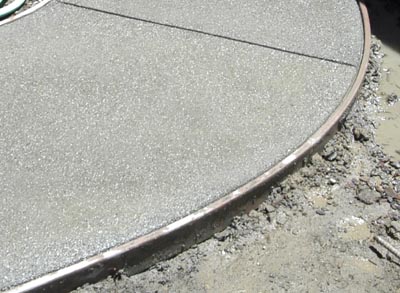
Close up of Exposed Concrete Surface
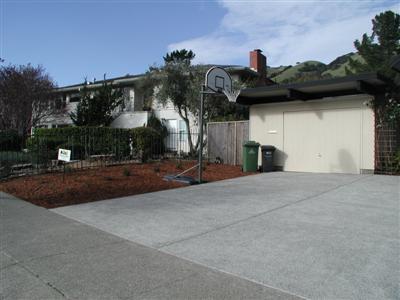
Heavier Exposure Concrete Driveway
Colored Concrete: Color concrete is achieved with a color pigment that is added directly into the concrete mixture (integral mix). There are a wide variety of earth toned concrete colors available. At times colored concrete can have some color variations and can fade and discolor over time. Colored concrete can be used with a surface treatment such as the exposed finish as detailed above.
To see available concrete colors visit:
Davis Colors or Scofield Color

Colored Concrete Driveway
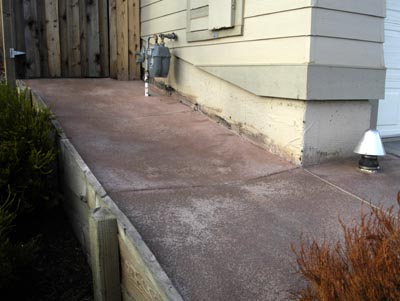
Colored concrete can become blotchy depending on a series of factors involving drying exposure, quality of finishing and amount of available moisture in the ground and added to the mix and the time of pouring.
Broom Finish: This is a standard concrete finish where the concrete is troweled to a smooth surfaced and then broomed to create a higher traction surface for outdoor applications. Smooth finished concrete (like a garage floor) should not be used for outdoor applications as it poses a safety risk when wet. Broom finishes are commonly seen in new developments on sidewalks and as a finish for colored concrete.
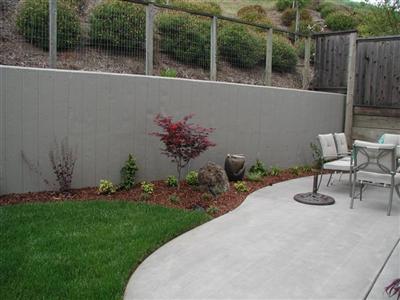
Broomed Color Concrete Patio
Salt Finish: This finish is often used around swimming pools, or in conjunction with terra cotta tile (think a Santa Barbara city Sidewalk). The concrete is finished smooth and then rock salt is added to the surface. When the concrete has set the rock salt is washed away leaving small pitholes in the concrete that create an interesting finish.
Seeded Aggregate: Concrete is finished and then small colored stones are packed by hand into the concrete surface. When the concrete has dried the top layer of concrete is washed away to reveal the stones. This is a popular finish for driveways. There are a variety of different pebble types that can be used to give different looks to the aggregate finish.
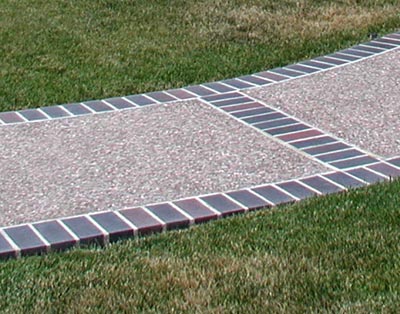
Aggregate Path with Brick Trim
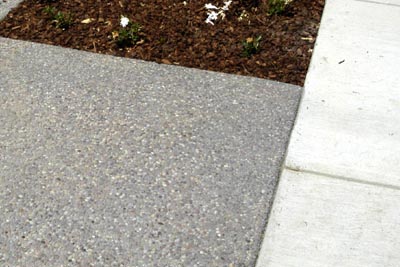
Aggregate finish adjacent to gray brushed concrete finish
Stamped Concrete: Stamped concrete is typically colored concrete applied by with special color and shape molds that give the concrete a different appearance. Typically the stamps imitate stone or tile patterns. Some can offer the look of stone at reduced cost. Stamped concrete is typically done by stamped concrete contractors who specialize in this type of installation. Bomanite is one company that has authorized dealers that install stamped and colored concrete using their particular stamp and color patterns.
Stained Concrete: Concrete staining is a surface treatment, where stains or dyes are applied to the surface of the concrete to improve or change its appearance. There are a lot more options for colors and patterns and textures with stained concrete. This is also something that can be done to existing concrete. Frequently, surface staining is done on interior floors (often in restaurants)
For more information on Concrete Types and Finishing Processes visit:
Concrete Network
A Quikrete Guide to Finishes
